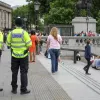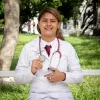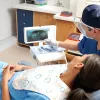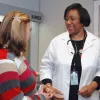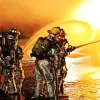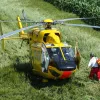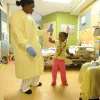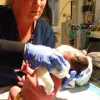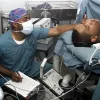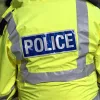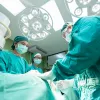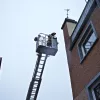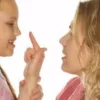Important update from TheSchoolRun
For the past 13 years, TheSchoolRun has been run by a small team of mums working from home, dedicated to providing quality educational resources to primary school parents. Unfortunately, rising supplier costs and falling revenue have made it impossible for us to continue operating, and we’ve had to make the difficult decision to close. The good news: We’ve arranged for another educational provider to take over many of our resources. These will be hosted on a new portal, where the content will be updated and expanded to support your child’s learning.
What this means for subscribers:
- Your subscription is still active, and for now, you can keep using the website as normal — just log in with your usual details to access all our articles and resources*.
- In a few months, all resources will move to the new portal. You’ll continue to have access there until your subscription ends. We’ll send you full details nearer the time.
- As a thank you for your support, we’ll also be sending you 16 primary school eBooks (worth £108.84) to download and keep.
A few changes to be aware of:
- The Learning Journey weekly email has ended, but your child’s plan will still be updated on your dashboard each Monday. Just log in to see the recommended worksheets.
- The 11+ weekly emails have now ended. We sent you all the remaining emails in the series at the end of March — please check your inbox (and spam folder) if you haven’t seen them. You can also follow the full programme here: 11+ Learning Journey.
If you have any questions, please contact us at [email protected]. Thank you for being part of our journey it’s been a privilege to support your family’s learning.
*If you need to reset your password, it will still work as usual. Please check your spam folder if the reset email doesn’t appear in your inbox.
People who help us
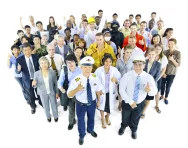
There are lots of people who help us in the community and it's great to learn about how they help us in our day-to-day lives. Some of these people help us in emergencies, like firefighters, police and doctors and nurses. If there is an emergency, you'll need to know how to get in touch with the right person to help you (however old you are).
Other people help us to stay safe and healthy, like opticians, dentists and refuse collectors.
Anybody can do a job that helps other people if they have been trained properly – maybe you'll want to do one of these jobs when you grow up.
Note for parents:
Learning about this topic helps children to make connections between themselves and the outside world. It aims to make them more aware of the different jobs and roles people take on in their own homes, in school and in their local community. It can help allay fears for children who worry about going to visit medical specialists or have concerns about intruders or fire. By educating young children about the people who try and prevent these things happening or help us if they do we are showing children the systems in place within our society to ensure that we live in a safe and supportive community. The topic also provides key life skills for children (for example, knowing how to dial the emergency services, who to ask if they get lost, how to test smoke alarms, etc.).
This topic encourages children to notice places and people in their community and, show them that they are part of a wider community and opens up possibilities for them to consider future careers. If taught well it can also play a major role in helping to break down gender stereotypes and ensuring equal opportunities for everyone.
Top 10 facts
- British police officers carry teddy bears in the back of their cars to comfort children who have been in an accident or are upset after something has happened.
- Policemen became to be known as 'bobbies' after Robert Peel who set up the first organised police service in London, 1829. Bobby is short for Robert.
- Before the invention of the horse drawn fire engine, fires were controlled by a 'bucket brigade'. A line of people passing water in buckets down a line to extinguish a fire and then back again to refill the buckets.
- Firefighters usually wear a fire-resistant jacket, fire-resistant trousers, safety boots, suspenders, special hood, helmet, goggles, insulated gloves, and a T-shirt with their station name on it. All this gear weighs almost 60 pounds which is about 27 kilos.
- Hundreds of years ago horses and carts were used as an ambulance.
- Nowadays all of the following these vehicles have been used as ambulances or response vehicles: vans, boats, helicopters or even converted vehicles such as golf carts, motorcycles, pedal cycles, quad bikes or horses.
- Only around 5% of firefighters in the UK are women, but the number of female firefighters is slowly increasing (it was around 3% in 2007).
- The UK's National Health Service (NHS) employs 1.7 million people. The NHS is the country's biggest employer.
- School Crossing Patrols (also known as "lollipop people"!) first appeared in the UK in 1953. Britain’s longest-serving lollipop lady, Margaret Cattle, helped children cross the road safely near their school for 45 years!
- Do you know how long it takes to train for these jobs?
- Doctor – at least 7 years
- Vet – 7 years
- Optician or dentist – 5 years
- Nurse – 4 years
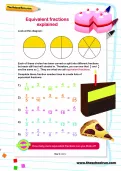
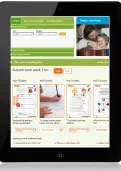
Boost Your Child's Maths & English Skills!
- Get a tailored learning plan for your child
- Complete the activities added each week
- See your child jump ahead in their knowledge and confidence
Did you know?
How many of these important things do you know?
- What your parent/carer’s home phone number, mobile number and address is?
- What to do if there is a fire in your home?
- What to do if your parent or carer is hurt and can’t help themselves?
- What to do if you are playing outside and one of your friends gets hurt?
- What to do if you get separated from your parents in a public place like a park or shopping area?
- What to do if a stranger comes to talk to you in a public place?
- What to do if you smell gas or smoke in your house?
- What to do if you see a fire on the street or in a public place?
- What to do if you get hurt?
- What to do if you see an accident near where you are?
Note for parents: It's a good idea to discuss these with your child. Maybe create a poster together and put it on the fridge as a visual reminder, or you could role-play some of these scenarios.
Can you spot the following in the gallery below:
- Police at work
- Doctor with her stethoscope
- A dentist
- Doctor and patient
- Firefighters at work
- A paramedic in a rescue helicopter
- A hospital nurse
- A midwife with a newborn baby
- A doctor looking after his patient during surgery
- The police on duty
- Surgeons during an operation
- A fireman on a turntable ladder
Gallery
About
How do the police help us?
- The police’s main job is to keep us safe.
- They try to stop crime and help to catch people who have committed crimes.
- They also control crowds of people in busy places.
- They sometimes direct the traffic or stop drivers from speeding.
- They wear uniforms and have to carry special equipment to restrain people who have committed crimes like handcuffs and leg straps.
- Some police drive cars with sirens and flashing lights on but others may ride on motorbikes, bicycles, boats, helicopters and even horses.
How do the firefighters help us?
- Their main job is to rescue people from fires and put fires out.
- They also rescue people from trapped cars and other vehicles.
- They are even called to rescue frightened cats from tall trees!
- They have to wear very special fire-resistant clothes including a coat, trousers, safety boots, a special hood, a helmet and goggles and all of this is really heavy.
- They carry an axe to make holes in walls to let the smoke and heat out.
- They have several long hoses attached to the fire truck and foldable ladders on top of the truck which helps them get close to the fire and rescue people from tall buildings.
- They also carry foam which puts out gas fires.
- Sometimes people have to jump out of windows to escape from fires and the fire fighters have a special rescue net which catches people like a trampoline.
- Fire fighters try and teach us how to prevent fires by using smoke alarms and never leaving candles open fires unprotected.
How do doctors and nurses help us?
- Doctors and nurses help us to get better if we have been injured or are ill.
- Some work in hospitals and some work in local clinics.
- Some nurses come into schools to check children’s development and may check their hearing or their eyesight.
- Doctors and nurses have lots of equipment to check different parts of our bodies, for example a stethoscope to listen to our heart, lungs and chest, a thermometer to check our temperature and a blood pressure machine to check our heart rate.
- Nurses may also give us injections to stop us from getting illnesses.
- Midwives and doctors deliver babies.
Who else may help us in our community?
- Traffic wardens make sure people are parking safely and fairly not blocking in places that are meant for disabled people.
- Opticians check our eyesight and can prescribe glasses for us if we cannot see clearly.
- Dentists check our teeth and gums are healthy and show us how to clean them properly. If our teeth are not straight they can give us braces to help them grow straight.
- School Crossing Patrol Officers help children to cross the road safely.
- Refuse Collectors collect the rubbish from our bins and make sure we are recycling properly.
Words to know:
- equipment
- uniform
- paramedics
- prevent
- casualty
- collision
- emergency services
Related Videos
Just for fun...
- Make your own 3D ambulance out of cardboard with a National Emergency Services Museum template
- An interactive game where you have to match objects to a person’s job
- Make your own stethoscope
- Lots of people-who-help-us craft ideas
- Print a North West Ambulance Service activity pack
- Complete Roary the Fire Lion's workbook
- Try an interactive fire safety game
- Do some research into emergency service uniform colours then colour in colouring sheets from the National Emergency Services Museum and try some People who help us wordsearches
Best kids' books about people who help us
Find out more
- Even very young children can be lifesavers! In 2022 a five year old boy called Colby Bridgman called 999 when his mother collapsed and saved her life. And in 2013 a four year old called Holly Ashton saved her mum who had collapsed with a kidney condition.
- Play Sparky's Fun House game to discover what to do in case of a fire
- Find out about hospital stays, operations and medical procedures on a website designed for children, Anaesthesia Web
- Play 'people who help us' bingo
- A radio programme about people who help us, presented by Justin Fletcher
- Play doctor and diagnose patients with a printable resource
- Make some 'people who help us' masks
- Take a 360 degree tour around an ambulance
- Read about blood and organ donation and how it can help people with children's guides and activities, specially designed by Team Margot & NHS Blood and Transplant to explain donation facts to kids
- Visit the National Emergency Service Museum in Sheffield
See for yourself
- Why not go down and visit your local fire station? They often have open days for the public and it is great fun to climb on the fire engines and ask the firefighters lots of questions!
- Essex Fire Museum
- City of London Police Museum
